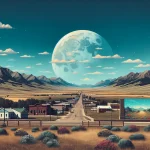Ophir, Colorado, a former mining town with a population of just 159 residents as of 2010, is a hidden gem in the San Juan Mountains. This small community offers visitors a chance to explore Colorado’s rich gold mining history while enjoying breathtaking natural beauty and outdoor adventures.
In This Article
TL;DR
- Ophir's historical significance as a former mining town established in 1881.
- The town's location within the San Juan Mountains offers unparalleled access to outdoor activities, such as hiking, camping, and fishing.
- Ophir's role in preserving Colorado's mining history and natural conservation efforts.
Historical Background
The Mining Era
Ophir was founded in 1881 during the mining boom in Colorado. The small town took its name from a place called Ophir in the Hebrew Bible. Gold mining was the primary industry in Ophir, and the town had a post office as early as 1878.
Ophir in the 20th Century
As mining declined, Ophir transitioned into a quiet mountain getaway filled with families and adventure seekers. The high alpine community is surrounded by 13,000-foot peaks, making it a stunning place to live.
Geography and Natural Attractions
The San Juan Mountains
Ophir is situated in the San Juan Mountains, which span over 10,000 square miles and include several national forests and wilderness areas. The range is known for its rugged beauty and diverse landscapes, from alpine tundra and high-altitude lakes to deep canyons and towering peaks.
Ophir Pass
Ophir Pass is a high mountain pass at an elevation of 11,789 feet, located just 3 miles from the small town of Ophir. The road to the summit offers alpine views of the upper Ophir Valley and neighboring peaks. It’s a popular route for off-roading and scenic drives, typically accessible from June to November.
Community and Lifestyle
Living in Ophir
Ophir is a small, tight-knit community with roughly 74 homes and 180 residents. The town is governed by a general assembly and is a Home Rule Municipality.
Economic Development
Tourism as a Main Economic Driver
Tourism has become a significant part of Ophir’s economy, with visitors drawn to the area’s natural beauty and outdoor recreational opportunities. Popular activities include hiking, camping, fishing, and exploring nearby ghost towns.
Conservation Efforts
Preserving Ophir’s Natural Environment
Ophir is surrounded by protected lands, including the Lizard Head Wilderness, Mount Sneffels Wilderness, San Juan National Forest, and Uncompahgre National Forest. These areas provide ample opportunities for outdoor enthusiasts while ensuring the conservation of the region’s natural resources.
FAQ
What are some popular outdoor activities in and around Ophir?
Popular activities in Ophir include hiking, camping, fishing, and exploring nearby ghost towns. The Ophir Pass is a popular 4-wheeling route, and the Janes Run Trail offers a moderately challenging hiking experience.
How do I get to Ophir, Colorado?
Ophir is located 12 miles south of Telluride and can be reached via CO-145. The scenic drive from Telluride takes about 20 minutes.
What is the population of Ophir, Colorado?
As of 2010, the population of Ophir was 159 residents. Today, there are roughly 74 homes and 180 residents in the town.
What is the elevation of Ophir, Colorado?
Ophir is situated at an elevation of around 9,695 feet in the San Juan Mountains.
When is the best time to visit Ophir, Colorado?
The best time to visit Ophir depends on the activities you plan to enjoy. The summer months (June to August) are ideal for hiking and camping. The Ophir Pass is typically accessible from June to November if you want to drive it.






